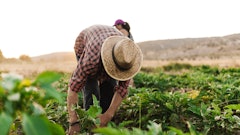Singapore is a city on a small island where more than five million people live, but the island has only about six hundred hectares of arable land and over 90% of Singapore’s food is imported from other countries, mainly Malaysia, Brazil, and Australia. Which is why the main focus of Singapore’s Agri-Food and Veterinary Authority (AVA) is the diversification of the food supply, with the AVA launching many programs aimed to encourage safe food imports from a variety of countries, including one called the Food Fund.
The Food Fund encourages research and development into ways to improve local farming techniques. Their goal is to increase the percentage of local foods people eat. The overall goal is to have 10-20 percent of the food Singaporeans eat grown locally. Three specific goals are to have 30 percent of the eggs, 15 percent of the fish, and 10 percent of the leafy greens people buy produced in Singapore.
This article on Eat.Drink.Better. showcases the vertical farming successes of SkyGreens, a firm that has found a way to produce greens on significantly less land and at one-quarter of the cost of conventional farming. The vertical farming enterprise grows vegetables in four-story transparent towers. The vegetables grow in trays on a loop powered by gravity-fed water wheels that takes them from the nutrient filled water at the bottom to the sunlight at the top and back down again. The vertical farming system uses less water than conventional farming and the electricity to run the entire operation is about $3 per month.
Vertical farming has been around a long time, but it’s just now getting popular because of the concentration of people in cities; because of environmental pressures, such as diminishing aquifers; and because of cost savings. To read more, click HERE.

















